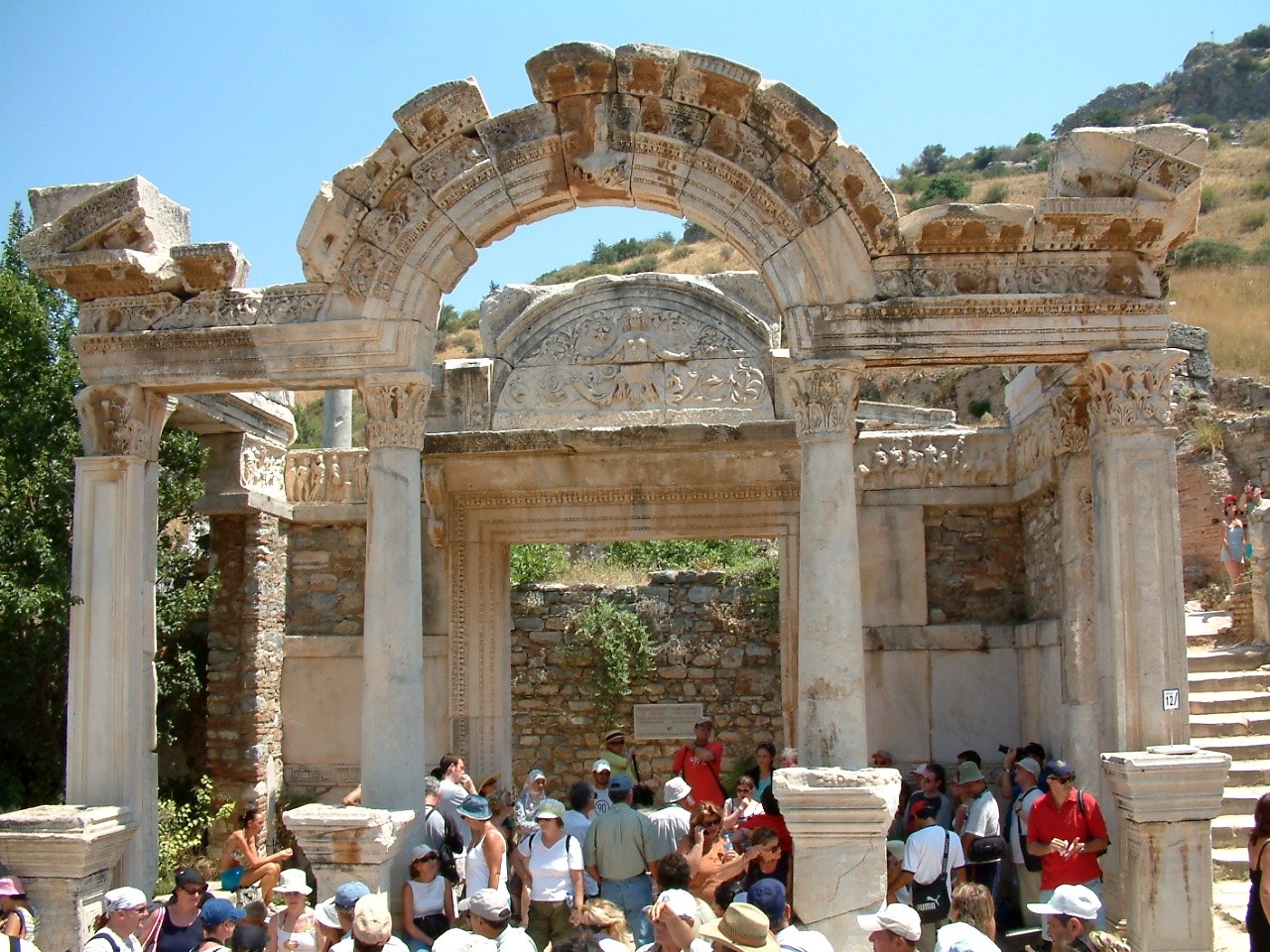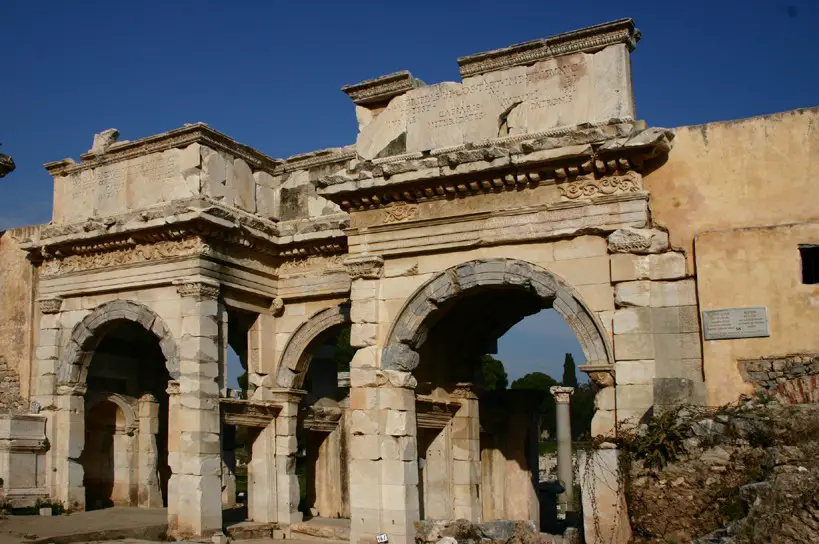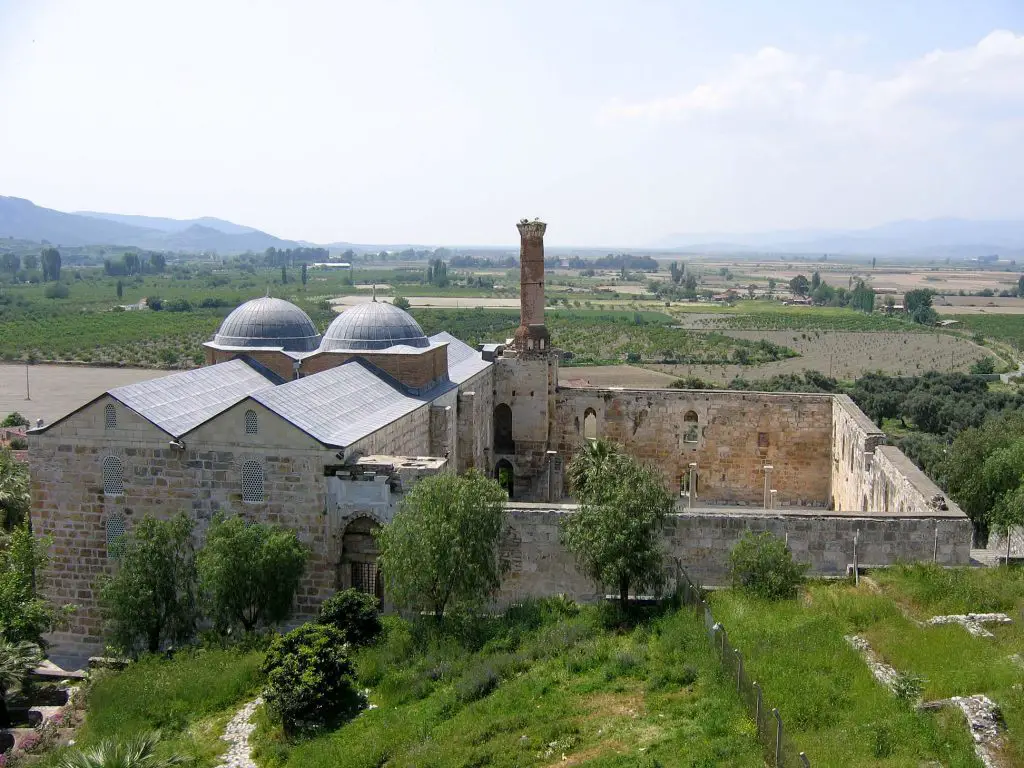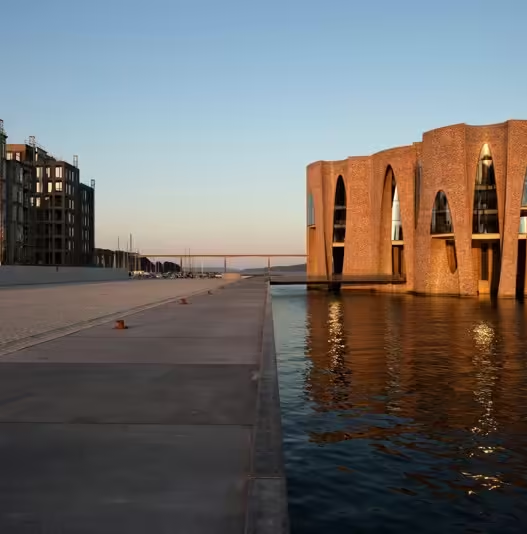The ancient city of Ephesus was an ancient Greek city, later an important Roman city, located on the western coast of Anatolia, within the borders of Selçuk district of Izmir province with its present name. It was one of the twelve cities of Ionia during the classical Greek period. Its foundation dates back to 6000 BC in the Neolithic Age. Included on the Tentative List of World Heritage Sites by UNESCO in 1994, Ephesus was registered as a World Heritage Site in 2015.
If you wish, you can also read our Life and Culture in the Ancient City of Ephesus article before this article.
- An ancient Greek city located on the west coast of Anatolia, in the Selçuk district of Izmir.
- It has a long history dating back to 6000 BC.
- As an important port city in its time, it played a central role in trade and cultural interaction.
- The Temple of Artemis is recognized as one of the seven wonders of the world.
- The Library of Celsus is one of the most beautiful examples of Roman architecture.
- Religious buildings such as the House of Virgin Mary and the Basilica of St. Jean are important for Christian beliefs.
- The caves of the Seven Sleepers are a sacred place according to Christian beliefs.
- The architectural structure of Ephesus bears the glorious traces of the Hellenistic and Roman periods.
- The Grand Theater is the largest open-air theater in the ancient world.
- The ancient city of Ephesus is a unique destination reflecting the rich history and cultural heritage of Anatolia.
Let’s examine this magnificent architecture together…Let’s examine this magnificent architecture together…

History of Ephesus Ancient City
If you want to read a more detailed review of the Ancient City of Ephesus, you can click here to go to the review by the Austrian Archaeological Institute.
The ancient city of Ephesus is one of the world’s leading historical cities, founded in 6000 BC and home to many civilizations. It is rumored that the city was founded by women warriors known as Amazons and was the city of Apasas, the city of the Arzawa (City of the Mother Goddess) Kingdom. There is no clear information about these periods, but it is thought that the locals lived here for a long time.
Neolithic period
In 1996, the Çukuriçi Mound was discovered on the banks of the Derbent Stream between tangerine orchards, about 100 meters southwest of the Selcuk, Aydin and Ephesus road triangle. Research and excavations conducted under the direction of archaeologist Adil Evren yielded stone and bronze axes, needles, burnished ceramic sherds, spindle whorls, obsidian (volcanic glass) and silex (flint), shellfish, grinding and polishing tools. In the light of the evaluations made, it was determined that there was a settlement and life at Çukuriçi Höyük from the Neolithic Period to the Early Bronze Age. The same type of materials were also found at Arvalya Höyük in Gül Hanım’s field adjacent to the Arvalya Stream at approximately the 8th km of the Selçuk, Kuşadası road. With the artifacts found in Çukuriçi and Arvalya (Gül Hanım) mounds, the history of the immediate vicinity of Ephesus thus reaches back to the Neolithic Period.
Hellenistic period
The port city of Ephesus, where immigrants from Greece started to live in 1050 BC, was moved to the vicinity of the Temple of Artemis in 560 BC. Ephesus, which is visited today, was founded by Lisimahos, one of Alexander the Great’s generals, around 300 BC. The city was autonomous from Rome and coined coins with the city of Apameia Kibotos. These cities were becoming very bright semi-autonomous in classical Asia Minor. Lisimahos rebuilt the city according to the “Grid Plan” invented by Hippodamos of Miletus. According to this plan, all streets and alleys in the city cut each other perpendicularly.
Roman period
Ephesus, which experienced its most glorious periods during the Hellenistic and Roman ages, became the capital of the province of Asia during the reign of the Roman Emperor Augustus and its population exceeded 200,000 people at that time (1st-2nd century BC). During this period, monumental buildings made of marble were erected everywhere. In the 4th century, trade in Ephesus declined as the harbor filled up. Emperor Hadrian had the harbor cleaned several times. The harbor fills with alluvium brought by the Marnas Stream and Küçük Menderes River coming from the north. Ephesus moves away from the sea. In the 7th century, the Arabs attacked these shores. Ephesus, which changed its location again during the Byzantine period and came to Ayasuluk Hill in Selçuk, where it was first established, was taken by the Turks in 1330. Ayasuluk, which was the center of Aydinogullari, started to shrink gradually from the 16th century. Today, Selçuk district is located in the region.
In the frieze at the entrance of the Temple of Hadrian at the ruins of Ephesus, the 3,000-year-old foundation legend of the ancient city of Ephesus is given in the following sentences:
Androclos, the brave son of the Athenian king Kodros, wants to explore the other side of the Aegean. First, he consults the oracles of the Temple of Apollo in the city of Delphi. The oracles tell him that he will build a city where the fish and the pig point. As Androklos ponders the meaning of these words, he sets sail for the dark blue waters of the Aegean… When they come to the gulf at the mouth of the Kaystros (Küçük Menderes) River, they decide to land. While they were cooking the fish they caught by lighting a fire, a wild boar emerged from the bushes, snatched the fish and ran away. And the prophecy is fulfilled. They decided to build a city here…
Ephesus, which was the main gate between East and West, was an important port city. This position enabled Ephesus to develop as the most important political and commercial center of its age and to become the capital of the province of Asia during the Roman period. Ephesus does not only owe its importance in antiquity to this. The largest temple of the Artemis culture, based on the ancient Anatolian tradition of the mother goddess (Cybele), is also located in Ephesus.
Architectural Structures of Ephesus Ancient City
Since Ephesus has been relocated many times throughout its history, its ruins are spread over a large area of about 8 kilometers. Today, the ruins of Ephesus are visited by an average of 1.5 million tourists a year in four main regions: Ayasuluk Hill, Artemision, Ephesus and Selçuk. Let’s examine the main structures in the ancient city of Ephesus, the first city built entirely of marble.
Temple of Artemis

The Temple of Artemis, one of the seven wonders of the world, was the first temple in the ancient world to be built of marble. Its foundations date back to the 7th century BC. Built by the Lydian king Croesus in dedication to the goddess Artemis, it was designed by the Greek architect Chersiphron and decorated with bronze statues by the greatest sculptors of the time, Pheidias, Polycleitus, Kresilas and Phradmon. Its size is 130 meters by 68 meters. Its foundation is 6 meters deep. Its façade faces west like the other temples. The temple was used both as a marketplace and a religious site. The Temple of Artemis was burned on July 21, 356 BC by a Greek named Herostratus who wanted to immortalize his name. Alexander the Great was born that night and when he conquered Anatolia, he offered to help rebuild the Temple of Artemis but was refused. Only a few marble blocks remain from the temple today.

Library of Celsus
One of the most beautiful buildings of the Roman period, it served as both a library and a tomb monument. In 106, when Celsius, the governor of Ephesus, died, his son built the library as a funerary monument in his father’s name. Celsius’ sarcophagus is under the west wall of the library. Studies on the remains of the building show that despite the two-story appearance of the façade, the building had three floors. In the 3rd century, the reading hall burned down during the earthquakes that affected the region, but was later repaired. It is believed that the front facade was also destroyed by an earthquake in the Middle Ages. Since the earthquake destroyed all other parts except the façade, it was used for a long time as the magnificent back wall of a fountain built later. The facade was restored between 1970 and 1980.

House of Virgin Mary

It is the church where Mary, the mother of Jesus, is believed to have spent her last years. It is a place of pilgrimage for Christians and has been visited by some popes. Mary’s tomb is also thought to be located here, but it is believed that Mary’s tomb is in Silifke as described in the Bible.
Basilica of St. Jean

Built by the Byzantine Emperor Iustinianus the Great and one of the largest buildings of that period, the 6-domed basilica is claimed to contain the tomb of St. Jean(John), Jesus’ favorite apostle, at the bottom, but no findings have yet been found. There is also a monument erected here in the name of St. Jean. This church, which is considered very important for Christians, is located in Ayasuluk Castle.
Seven Sleepers (Ashab-ı Kehf)

This place, which was turned into a funerary church during the Byzantine period, is believed to be the cave where seven Christian youths who fled from the persecution of pagans during the time of Decius, one of the late Roman emperors, took shelter at the foot of Panayır Mountain. Although there are 33 cities around the world that claim to have this cave within their borders, according to most Christian sources, the city is Ephesus, which is considered sacred by Christians.
A church built on top of this cave in Ephesus was uncovered during an excavation in 1927-1928, and tombs dating back to the 5th and 6th centuries were also found during the excavation. Inscriptions are found both in the tombs and on the walls of the church.
Isa Bey Mosque

It was built in 1374-75 by Isa Bey of Aydınoğulları on Ayasuluk Hill by the architect Şamlı Ali. It is located between the Temple of Artemis and the Church of Saint Jean. The mosque, which exhibits the first examples of Anatolian mosque architecture, has rich decorations and tiles. In the 19th century it was also used as a caravanserai
Ephesus Ancient City Other buildings
Temple of Hadrian

It was built as a memorial temple in the name of Emperor Hadrian. The friezes depict the legend of the foundation of Ephesus.
Domitian Temple

The temple built in the name of Emperor Domitianus, which is thought to be one of the largest structures in the city, is located opposite the Traianus Fountain. It was determined that there were columns on the sides of the temple, of which only the foundations have survived to the present day. The remains of the statue of Domitianus are the head and an arm.
Temple of Serapis
The Temple of Serapis, one of the most interesting structures of Ephesus, is just behind the Library of Celsus. It is thought that the temple, which was converted into a church during the Christian era, was built by the Egyptians.
Church of Mary
In 431, the Church of Mary, where the Council Meeting was held, was the first church built in the name of Mary. It is located north of the Harbor Bath. It is among the Seven Churches of the Christian religion.
Upper Agora and Basilica
Built by Emperor Augustus, it was the site of official meetings and stock exchange transactions.
Fortress of John
There are glass and water cisterns inside the castle. It is the highest point in the vicinity of Ephesus. Also, the hill where this church is located is the first settlement area of the ancient city of Ephesus.
Octagon
It is a monumental tomb of Cleopatra’s sister.
Senate Odeon

Ephesus had a bicameral administration. One of them, the Advisory Council meetings were held in this building, which was covered at the time, and concerts were given. It has a capacity of 1,400 people. For this reason, the building is also called Bouleterion.
Marble Street
It is the street extending from the library square to the theater.
Domitianus Square
To the east of the square, north of the Temple of Domitianus, is the Pollio Fountain and a building thought to be a hospital, and to the north on the street is the Memmius Monument.
Magnesia Gate (Upper Gate) and East Gymnasium
Ephesus has two entrances. One of them is the Magnesia Gate, the eastern gate of the city walls around the city, on the Way of the House of the Virgin Mary. The Eastern Gymnasium is right next to the Magnesia Gate at the foot of Panayır Mountain. The Gymnasium was the school of the Roman Age.
Heracles Gate
This gate was built at the end of the Roman Age and turned Kuretler Street into a pedestrian road. It was so named because of the reliefs of Heracles, the God of Strength, on its façade.
Mazeus Mitridatis (Agora South) Gate
It was built before the library, during the reign of Emperor Augustus. The gate leads to the Trade Agora (Lower Agora).
Monumental Fountain
The square in front of the Odeion is the “State Agora” (Upper Agora) of the city. In the center of it was the temple of the Egyptian gods (Isis). The Monumental Fountain, built by Laecanus Bassus around 80 BC, is located at the southwest corner of the State Agora. From here you can reach Domitian Square and the buildings clustered around this square such as the Fountain of Pollio, the Temple of Domitian, the Memmius Monument and the Heracles Gate.
Fountain of Trajan
It is one of the two-story monuments on the avenue. The globe seen under the foot of the statue of Emperor Traianus standing in the center symbolizes the world.
Heroon
It is a fountain built in the name of Androklos, the legendary founder of Ephesus. The front part was modified during the Byzantine period.
Slope Houses

The multi-storey houses built on terraces were inhabited by the rich of the city. These houses, the most beautiful of the Peristyle house type, have the comforts of modern houses. The walls are covered with marble and frescoes and the floor is covered with mosaics. The houses all have ancient heating systems and baths.
Great Theater

Located at the end of the Marble Street, it was the largest open-air theater in the ancient world with a capacity of 24,000 people. The highly ornate three-story stage building has been completely destroyed. The seating steps are in three sections. The theater was the venue for St. Paul’s sermons.
Palace Building, Stadium Street, Stadium and Gymnasium
The Byzantine palace and part of the street have been restored. The horseshoe-shaped stadium was the site of sporting games and competitions in ancient times. Gladiator games were also held in the late Roman period. The Vedius Gymnasium next to the stadium is a bath-school complex. Vedius Gymnasium is located at the northern end of the city, right next to the Byzantine walls.
Theater Gymnasium
The courtyard of the large building, which served both as a school and a bathhouse, is open. Here, marble pieces belonging to the theater are lined up for restoration purposes.
Agora
It is 110 meters by 110 meters, open in the middle and surrounded by porticos and shops. The Agora was the commercial and cultural center of the city. Agora is the starting point of the Marble Street.
Harbor Street
Stretching from the Grand Theater to the Ancient Harbor, which is completely filled in today, the columned and marble-paved Harbor Street (Arcadiane Street) is the longest street in Ephesus. On the 600-meter-long street, monuments were built during the Christian period of the city. The Four Apostles Monument with four columns, each with a statue of one of the apostles, is almost in the middle of the street.
Frequently Asked Questions
- Where is the ancient city of Ephesus located?
- The ancient city of Ephesus, today located in the Selçuk district of Izmir province, is situated on the western coast of Anatolia.
- When does the history of the ancient city of Ephesus begin?
- The history of the ancient city of Ephesus dates back to 6000 BC. This ancient city has a long history and a rich history.
- Which important buildings are located in the ancient city of Ephesus?
- In the ancient city of Ephesus, there are important buildings such as the Temple of Artemis, the Library of Celsus, the House of the Virgin Mary, the Basilica of St. Jean, and the Grand Theater.
- Why is the Temple of Artemis important?
- The Temple of Artemis is considered one of the seven wonders of the ancient world. It is one of the largest and most magnificent temples of its period.
- In which periods was the ancient city of Ephesus at its best?
- The Hellenistic and Roman periods were the most glorious times of the ancient city of Ephesus. Especially during the reign of the Roman Emperor Augustus, the city became the capital of the province of Asia and had a large population.
- Which religious buildings are located in the ancient city of Ephesus?
- In the ancient city of Ephesus, there are important structures for the Christian faith such as the House of Virgin Mary and the Basilica of St. Jean.
- What do the caves of the Seven Sleepers symbolize?
- The caves of the Seven Sleepers are a sacred site according to Christian belief. The cave is considered to be the refuge of seven Christian youths fleeing persecution during the late Roman period.
- Which architectural traces of which periods can be seen in the ancient city of Ephesus?
- Architectural traces of the Hellenistic and Roman periods can be seen in the ancient city of Ephesus. The city developed as an important trade and cultural center during these periods.
- Which buildings are most visited by tourists in the ancient city of Ephesus?
- Important buildings such as the Temple of Artemis, the Library of Celsus, the Great Theater are among the most visited places by tourists in the ancient city of Ephesus.
- When is the best time to visit the ancient city of Ephesus?
- The best time to visit the ancient city of Ephesus is usually during the spring and fall months. The weather is cooler and the crowds are smaller, so you can enjoy your visit more.
- Which civilizations were hosted in the ancient city of Ephesus?
- The ancient city of Ephesus has been home to many civilizations throughout history. These civilizations include important periods such as Greek, Roman, Hellenistic, and Byzantine.
- What is the UNESCO registration status of the Ancient City of Ephesus?
- The ancient city of Ephesus was included on the Tentative List of World Heritage Sites by UNESCO in 1994 and registered as a World Heritage Site in 2015.
- According to which legends was the ancient city of Ephesus founded?
- There are many legends about the foundation of the ancient city of Ephesus. One of them is that Androclos, the brave son of the Athenian king Kodros, founded the city with the guidance of the oracles in the Temple of Apollo.
- For what purpose was the Library of Celsus, one of the important buildings of the ancient city of Ephesus, used?
- The Library of Celsus was used both as a library and a tomb monument. In 106, after the death of Celsius, the governor of Ephesus, it was built by his son on behalf of his father.
- What is the history of the House of the Virgin Mary?
- The House of the Virgin Mary is a church where Mary, the mother of Jesus, is believed to have spent her last years. It is a holy place for Christians and is visited.
- What are the architectural features of the Basilica of St. Jean?
- The Basilica of St. Jean was built by the Byzantine Emperor Iustinian the Great. It is claimed to contain the tomb of St. Jean and is an important pilgrimage center for Christians.
- Which periods can be traced in the ancient city of Ephesus?
- In the ancient city of Ephesus, there are traces of many periods from the Neolithic period to the Hellenistic and Roman periods. Ruins and structures from these periods can be seen.
- Which important personalities are associated with the ancient city of Ephesus?
- The ancient city of Ephesus was rebuilt by Lisimahos, one of Alexander the Great’s generals. Emperor Hadrian also contributed to the city.
- What is the importance of trade and economy in the ancient city of Ephesus?
- The ancient city of Ephesus has been an important trade center between East and West. Thanks to this location, it has a great economic importance.
- What are the opportunities that the ancient city of Ephesus offers to today’s visitors?
- The ancient city of Ephesus offers visitors a rich historical and cultural heritage. It offers visitors a unique experience with its historical buildings, museums, and archaeological ruins.
My Thoughts on the Ancient City of Ephesus
This settlement, which dates back to 6000 BC, went beyond its original purpose of creation over time and turned into a whole living space. Even though many structures have not survived to the present day, as a result of the archaeological studies on the ruins of Ephesus, we understand again how complicated and how flamboyant this area is.
What do you think about the Ancient City of Ephesus , a living space and a cultural center? Do you think it is the symbol of Anatolia? Is there anything missing? If you haven’t checked it out yet, you can also read our Galata Tower review.
You can share your thoughts with us and subscribe to our newsletter, which will send you our latest articles via e-mail.
Architect Mixed (many restorations.)
Architectural Style Greek-Roman
Year: 6000 BC (estimated)
Location: Izmir, Turkey






































